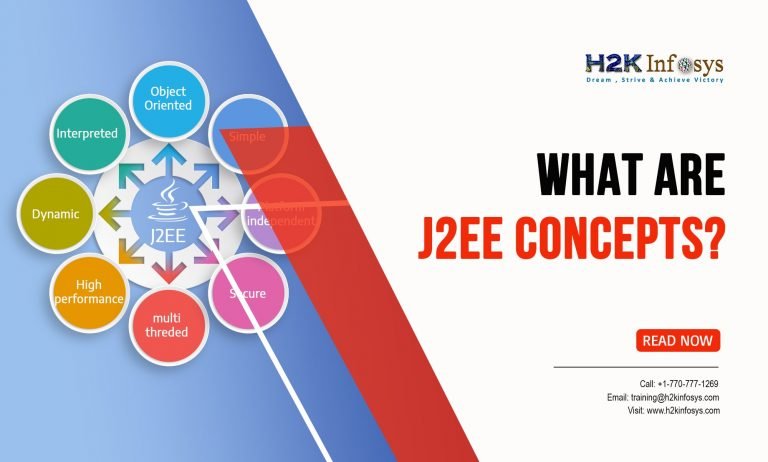J2EE (Java 2 Platform Enterprise Edition) is a platform-independent environment used for configuring web-based enterprise applications. It contains several APIs, protocols, and run-time environment for the development of network-based web services. It creates multi-tiered applications, large-scale, reliable, and secure network applications.
Advantages of J2EE:
J2EE (Java 2 Platform, Enterprise Edition), now known as Jakarta EE, is a robust platform for developing and running enterprise-level applications. Here are its key advantages:
1. Platform Independence
- Built on Java, J2EE applications can run on any platform with a compatible JVM (Java Virtual Machine). This ensures wide compatibility and reduces platform lock-in.
2. Scalability
- J2EE supports distributed, multi-tiered applications, making it suitable for scaling up as the application’s user base and complexity grow.
3. Component-Based Architecture
- Uses reusable components like servlets, JSP, and EJBs, which allow modular application development and easier maintenance.
4. Integration Support
- Facilitates seamless integration with legacy systems, databases, and third-party tools through APIs like JDBC, JNDI, and JMS.
5. Security
- Provides robust built-in security features, including declarative and programmatic security, SSL, and integration with authentication/authorization protocols.
6. Support for Web Services
- Includes APIs for building and consuming web services, such as JAX-WS and JAX-RS, enabling modern, service-oriented architectures.
7. Standardization
- Being a specification-based platform, J2EE ensures standardization, which guarantees compatibility across various application servers (e.g., Apache Tomcat, JBoss, WebLogic).
8. High Availability and Reliability
- Provides mechanisms like clustering, load balancing, and failover to ensure high availability and reliable performance.
9. Enterprise-Level Features
- Includes capabilities for transaction management (via JTA), distributed computing, and resource pooling, which are essential for large-scale enterprise applications.
10. Developer Productivity
- Simplifies enterprise application development through standardized APIs, tools, and frameworks (e.g., Hibernate, Spring Framework, etc.).
11. Community Support
- Backed by a vast developer community and vendors, offering extensive resources, libraries, and tools.
12. Extensibility
- Designed to be extended and customized, enabling businesses to tailor the platform to meet specific needs.
- Enterprise applications are reliable, secure, and scalable.
- It enhances the productivity of a programmer as it is easy to learn and use, especially when supported by a Java full stack developer course or Java training and placement programs.
- It can operate on multiple platforms.
- It is portable across different machines, vendors, and servers.
Services of J2EE:
- J2EE supports pure HTML as well as Java Applets. It is based on Java Server Pages and Servlet code to create applications.
- EJB (Enterprise Java Beans) provides a separate layer for storing the logic.
- JDBC (Java Database Connectivity) creates a connection between an application and a database.
J2EE Tiered Applications:
J2EE allows multi-tiered applications where each tier performs a different functionality.
- Client Tier: In this tier, a client makes a request to the server. The request is sent to the server by the client, and the server then returns the corresponding response. Requests can either be made from a browser, an application, or another server.
- Web Tier: This tier manages the client and business tier interaction. Web Tier consists of JSP, Servlet, Expression Lang, Java Beans Components, etc.
- Business Tier: It is responsible for the business logic of an application. It contains EJB (Enterprise Java Beans), Java Persistence API entities, Restful Web Services, etc.
- Enterprise Information Tier: It is available on the other machine other than the device containing the J2EE application. It comprises of Java Persistence API, JDBC (Java Database Connectivity) API, JTA (Java Transaction) API, and Java EE Connector Architecture.
Servlet
The servlet is used to create a web application in Java. It is an API that contains various classes and interfaces. It is a web component used to create dynamic web pages. It reads the data (both explicit and implicit) sent by the client (browser) (it may be any form or an applet application) and implicit HTTP requests, including cookies, and media types, processes the data, generates the result, and again sent this result to the client.
Advantages of Servlet:
- It provides better performance by creating multiple threads for each request.
- It can also handle complex requests obtained from the web server.
- It uses Java; hence it is portable, platform-independent, and secure.
- It is robust as we do not need to worry about memory leak, garbage collection, etc. as JVM manages everything.
JSP
JSP is a server-side programming technology in Java that is used to create dynamic, platform-independent web applications similar to Servlet. It can be called an extension of Servlet because it provides more functionality than Servlet like Expression Language, JSTL, etc.
Advantages of JSP:
- It contains various other features like implicit objects, predefined tags, expression language, etc.
- It is easy to maintain because business logic is separated from presentation logic.
- After any modification in the JSP page, there is no need to recompile or redeploy the project.
- Coding is less because we use many predefined tags, action tags, etc.
- Exception Handling is easy in JSP.
- It can easily connect the website to the database.
Expression Lang
JSP Expression Lang (EL) helps in the easy accessibility of data stored in JavaBean components. In EL, we can use integers, string, floating numbers, etc. Both arithmetic and logical expressions can be created with the help of EL.
Syntax:
${expression}
- EL makes the integration of the server-side state with presentation output easily.
- EL is written within ${, and }.
- EL can directly be used in the static text as well as template text.
- EL can be used in any standard or custom action attribute.































One Response